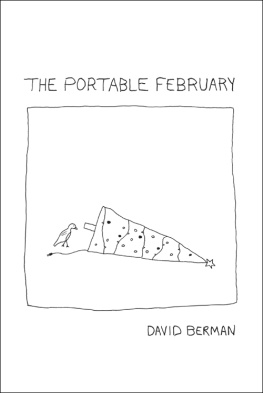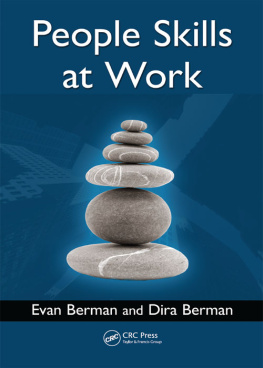Berman - Earth-Shattering
Here you can read online Berman - Earth-Shattering full text of the book (entire story) in english for free. Download pdf and epub, get meaning, cover and reviews about this ebook. year: 2019, publisher: Little, Brown and Company, genre: Religion. Description of the work, (preface) as well as reviews are available. Best literature library LitArk.com created for fans of good reading and offers a wide selection of genres:
Romance novel
Science fiction
Adventure
Detective
Science
History
Home and family
Prose
Art
Politics
Computer
Non-fiction
Religion
Business
Children
Humor
Choose a favorite category and find really read worthwhile books. Enjoy immersion in the world of imagination, feel the emotions of the characters or learn something new for yourself, make an fascinating discovery.

Earth-Shattering: summary, description and annotation
We offer to read an annotation, description, summary or preface (depends on what the author of the book "Earth-Shattering" wrote himself). If you haven't found the necessary information about the book — write in the comments, we will try to find it.
Earth-Shattering — read online for free the complete book (whole text) full work
Below is the text of the book, divided by pages. System saving the place of the last page read, allows you to conveniently read the book "Earth-Shattering" online for free, without having to search again every time where you left off. Put a bookmark, and you can go to the page where you finished reading at any time.
Font size:
Interval:
Bookmark:

Copyright 2019 by Bob Berman
Cover design by Gregg Kulick
Cover copyright 2019 by Hachette Book Group, Inc.
Author photograph by Philip Kamrass, Albany Times Union
Hachette Book Group supports the right to free expression and the value of copyright. The purpose of copyright is to encourage writers and artists to produce the creative works that enrich our culture.
The scanning, uploading, and distribution of this book without permission is a theft of the authors intellectual property. If you would like permission to use material from the book (other than for review purposes), please contact permissions@hbgusa.com. Thank you for your support of the authors rights.
Little, Brown and Company
Hachette Book Group
1290 Avenue of the Americas, New York, NY 10104
littlebrown.com
twitter.com/littlebrown
facebook.com/littlebrownandcompany
First ebook edition: February 2019
Little, Brown and Company is a division of Hachette Book Group, Inc. The Little, Brown name and logo are trademarks of Hachette Book Group, Inc.
The publisher is not responsible for websites (or their content) that are not owned by the publisher.
The Hachette Speakers Bureau provides a wide range of authors for speaking events. To find out more, go to www.hachettespeakersbureau.com or call (866) 376-6591.
ISBN 978-0-316-51133-9
E3-20190125-JV-NF-ORI
Zapped
Zoom
The Suns Heartbeat
Shooting for the Moon
Strange Universe
Cosmic Adventure
Secrets of the Night Sky
To Ulster Publishing editors Brian Hollander and Julie OConnor and, especially, its publisher, Geddy Sveikauskas, who trusted me enough to pay for my first Woodstock Times Night Sky column in 1975a weekly deadline Im still meeting today
The day which we fear as our last is but the birthday of eternity.
SENECA, CIRCA AD 48
I ts not the end of the world!
My wife muttered that clich for perhaps the fortieth time this year in a kindhearted attempt to make me feel better about our snowblowers snapped pull cord. Usually one doesnt reply to rhetorical comments. But I found myself saying, Unless, by amazing coincidence, a nuclear war begins this afternoon.
She didnt laugh. Neither of us was guilty of original thinking. Civilizations throughout time have been obsessed with Armageddon.
We can only guess why this is so. Probably humans share a hopeful sense of collective destiny, of events unfolding according to some lofty blueprint. And this feeling of grandeur makes people want to lump their fate in with some epic, planetwide denouement rather than face the more likely reality that theyll succumb to high cholesterol.
Whatever the reason, peoples fears commonly revolve around devastating events beyond their control. During the Q-and-A period after I give a lecture at a college or library, audience members often express worries about Earths poles flipping or a rogue planet colliding with ours. The 1996 Discover magazine issue with the cover story about the chances of a giant meteor slamming into our world was one of the most popular ever.
Perhaps its the sheer drama, plain and simple. The notion of millions of people dying at the same timewhether from an Ebola-type epidemic or nuclear terrorismseems riveting, even while the actual likeliest threats to people remain unglamorous, like lung cancer due to smoking cigarettes.
Finally, such planetwide holocausts are not purely theoretical. Devastating catastrophes have actually happened repeatedly, and they will happen again. Learning about them, especially with the addition of all the cool-fact details that have only recently surfaced and are still not widely known, satisfies a very old need that transcends todays culture. At the same time, recently evolving global threats, not just to our species but to our entire planet, bring a new urgency to the subject.
Ill admit itIm one of those people who find this stuff fascinating. And Im determined to create a factual narrative that vividly illustrates these cataclysms, past, present, and future.


W ere all oddly drawn to a theme that started in ancient Egypt and Greece and has perennially appeared in folklore. Its the idea of the phoenix, the creature that emerges from the ashes of a conflagration. The metaphoric implication is that if our world, or at least our culture and all we hold dear, is violently destroyed, something just as vibrant can rise from the ruins.
This has actually happened, not once or twice, but repeatedly. And not just on the local or even planetary level but on epic scales that have rattled the floorless alleyways of the cosmos. Were talking about cataclysms.
In a way, theyre counterintuitive. A quick study of nature shows that all objects display inertiaa strong tendency to keep doing whatever it is they are already doing. Planets whirl around the sun, and nothing is needed to maintain the motion. Meanwhile the sun, the center of all this respectful planetary circling, carries its obedient retinue through the galaxy at 144 miles a second as it participates in the galaxys rotation. The sun and its flock have performed nineteen such circuits since their birth, and, like a mother duck with her ducklings, Sol always returns with the same retinue in tow.
No long-lived observer patiently studying our solar system for millennia would notice anything different with each galaxy rotation. Only if he were armed with a super-telescope and perhaps alerted to be extra-attentive would the onlooker detect a change. Look at that third planet, the blue one, he might whisper. This time around, at some point while its been away on its most recent galactic orbit, most of its life was destroyed. It has undergone a cataclysm. And yet now its surface is crawling with strange new organisms. What magic! What will happen next?
Our ageless observer might be quicker to see that with each galaxy rotation and each return, the sun itself has changed. Each time it completes its 240-million-year circuit of the Milky Ways core, going beyond the stars of Sagittarius, it returns 2.5 percent more luminous. Thats just a little brighter. The change is as subtle as a 75-watt bulb becoming 77 watts, so our onlooker would have to be sharp indeed to notice this alteration. Only after about four circuits of the galaxys core and the passage of a billion years would the brightening of the sun be obvious. Still, even after that protracted interval, the difference would be a mere 10 percent boost. The 75-watt bulb is now 83 watts. But thats enough to make the third planet too hot. In the past single circuit, all its life has vanished.
A close inspection of that planet and its near neighbors shows that Earths large-headed Homo sapiens creatures have built ark-like spacecraft and abandoned their world to colonize the next planet out, the orange one, although life there is proving to be a radiation-filled struggle.
The above scenario is a reasonably accurate look ahead to a time a mere 1.1 billion years from now. The sun will indeed be 10 percent brighter, and all Earth life will indeed be destroyed by the heat, and if we humans still exist, we will surely have fled to the only planet in that anti-sunward direction that has any sort of surface. All others are gaseous and slushy and offer no place to land.
Font size:
Interval:
Bookmark:
Similar books «Earth-Shattering»
Look at similar books to Earth-Shattering. We have selected literature similar in name and meaning in the hope of providing readers with more options to find new, interesting, not yet read works.
Discussion, reviews of the book Earth-Shattering and just readers' own opinions. Leave your comments, write what you think about the work, its meaning or the main characters. Specify what exactly you liked and what you didn't like, and why you think so.















